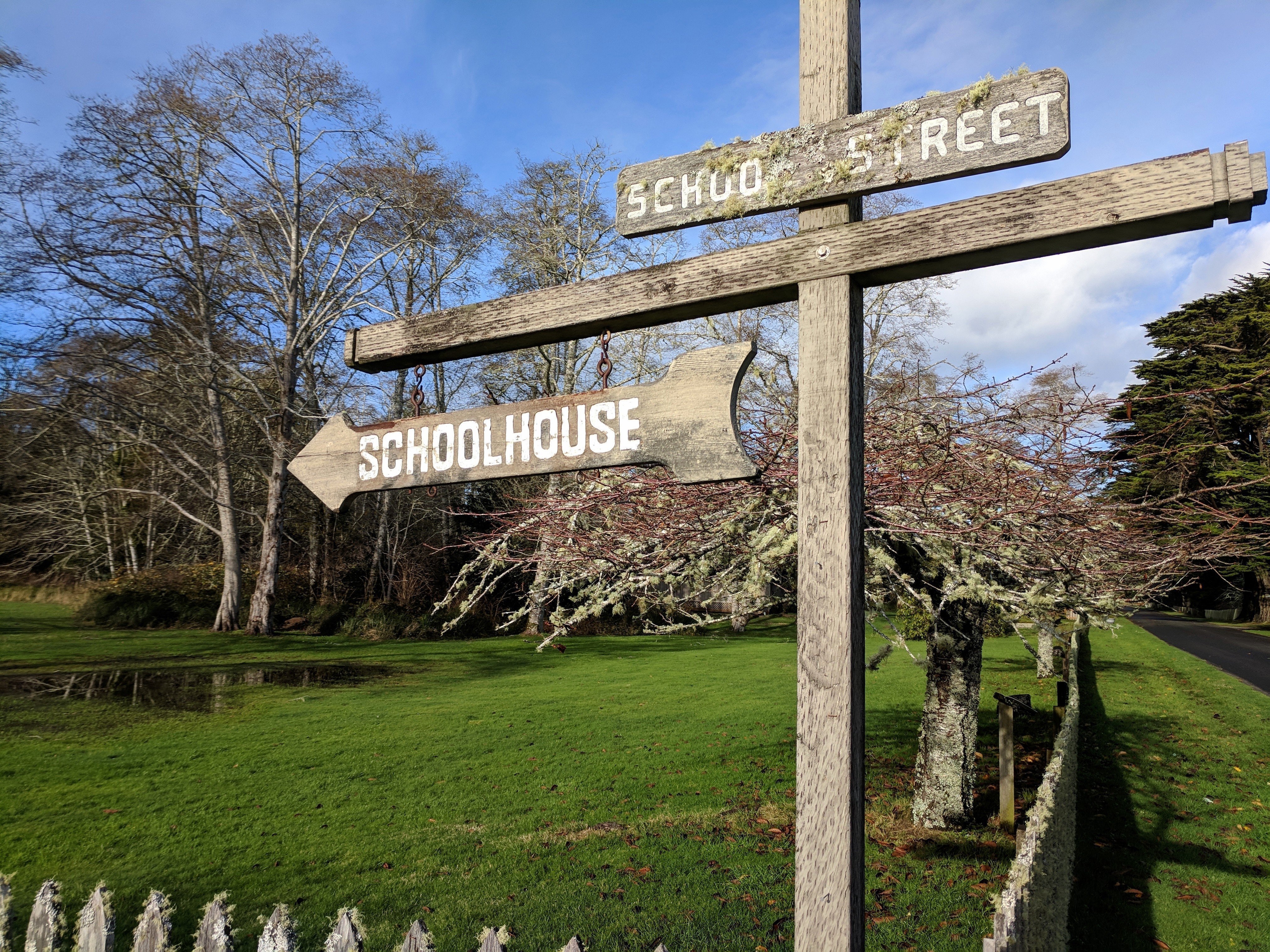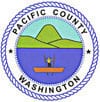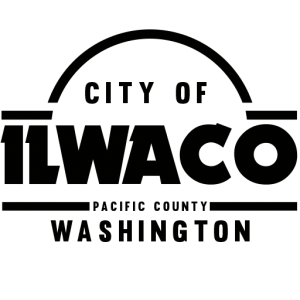For generations before the pioneer settlers arrived, Chinook Indians gathered oysters in the Peninsula part of Willapa Bay and camped in the area that is now called Oysterville. They called it “tsako-te-hahsh-eetl” which, like many Indian words, had two meanings – “place of the red-topped grass” and “home of the yellowhammer.” (Yellowhammer is the local name for the red-shafted flicker, a woodpecker common to this region.)
Oysterville was settled in 1854 by R.H. Espy and I. A. Clark. They had agreed on a rendezvous with Chief Nahcati who had told Espy of tidelands covered with succulent oysters. On April 20, as they paddled north from the head of the bay, they became engulfed by a heavy fog. Their sense of direction vanished and they feared they would be swept out to sea. However, Nahcati had spotted them before the fog rolled in and, by rhythmically pounding on a hollow log, directed them to shore. Nahcati had not exaggerated. The mudflats were piled high with tiny native oysters, there for the taking.
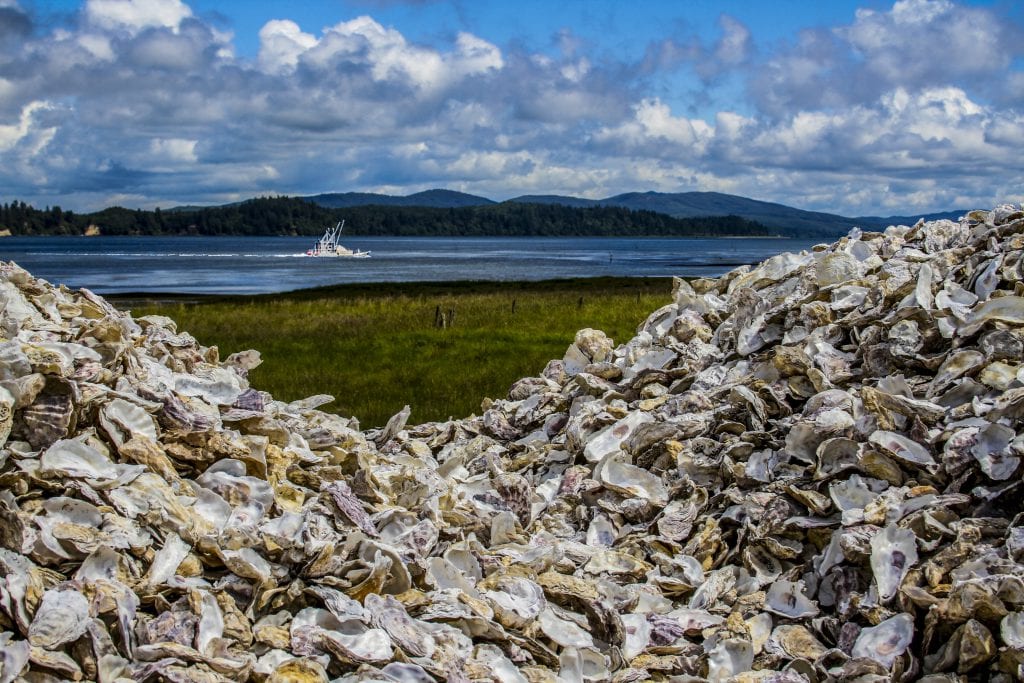
Not much later, Espy and Clark marketed the bivalves in gold-rich, oyster-hungry San Francisco. There, a plate of oysters sold for a Mexican “slug” which was worth two and a half times a twenty dollar gold piece. Within a few months there were 500 settlers in Oysterville and in 1855 it became the county seat of Pacific County. Washington Territory. It had many firsts: a school, a college, a newspaper, and finally, in 1873, a church. Oysterville was a rip-roarin’ town in those days. There were those who lived in “sin” and those who lived to be “saved” – about an even division. When the church was dedicated, the hard drinkers abandoned the saloons, marched together to the church, put their gold pieces in the collection plate, and returned to what they considered more stimulating than praying – drinking.
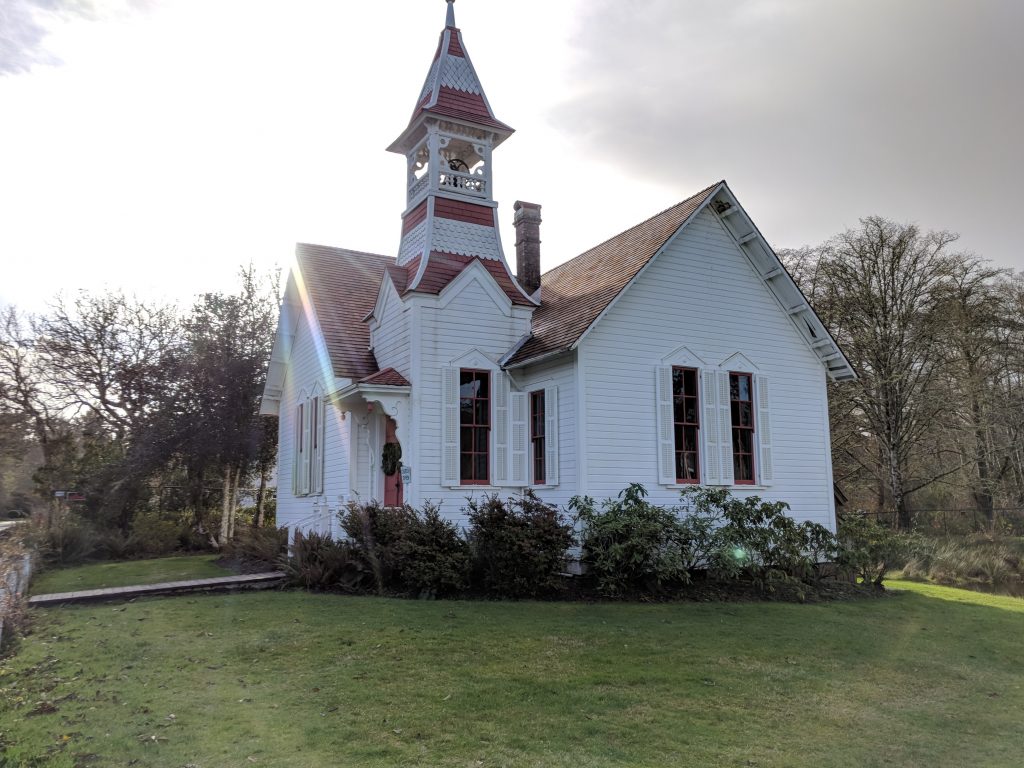
Oysterville Church
When oyster schooners came to pick up their cargo of bivalves, the oyster owners were paid in gold coin. Since a bank was the one business that was never established in this boomtown metropolis, gold receipts were stashed under mattresses or buried in old tin cans for safe keeping. It is said that there was often more gold in Oysterville than in any other town on the West Coast, except San Francisco.
In the late 1880s fate took a hand: the long-awaited railroad line ended at Nahcotta, an isolating four miles away; the native oysters became scarce and, without the possibility of a local livelihood, residents moved out en masse. In 1893, the courthouse records were stolen by South Bend “raiders” and Oysterville gradually became a sleepy little village where “time stood still.” Stop long enough to listen – you will hear the whispers of the past.
If you want to see, in a small way what Oysterville looked like in the old days, walk down Clay Street opposite the church to the edge of the bay and look back toward the village. You will see the fronts of the old homes which were built facing the bay. The street directly in front of the church, Territory Road, was once called 4th Street. Main Street was about where the easterly white picket fence is now and 1st Street was about where the easterly wire fence is near the bay. What was once known as Front Street is now out in the tidelands.
Oysterville is proud of the fact that it was placed on the Register of National Historic Districts in 1976. The District encompasses about 80 acres of the village.
A Walk Through the Oysterville Historic District
The following illustrations and descriptions are taken from the Walking Tour of Oysterville, a brochure produced by Oysterville Restoration Foundation (ORF) with the talented participation of writer Sydney Stevens and artist Patricia Fagerland. When you visit Oysterville, stop by the Church to pick a copy and to begin your walking tour of the Historic District. In the meantime, you can preview the village right here!
The numbered descriptions below correspond with the numbers on the map. While all primary structures are listed here, only those which are on the National Register or are of particular significance are illustrated and described in detail.
1. The Oysterville Church – 1892
Built at a cost of $1500, the church was a gift to the Baptist denomination by R. H. Espy. No regular services have been held here since the mid-1930s. In 1980 the church was rededicated as an ecumenical house of worship. Music Vesper services conducted by ministers from various churches on the peninsula are held Sundays from mid-June through Labor Day Weekend. All are welcome to “come as you are.”
2. Johnson Homesite – 1870 – 1896
The Johnsons were one of many Native American families who lived in Oysterville in its early days.
3. W. D. Taylor House – 1870
This house was constructed by early Loomis Stage Line driver, W. D. Taylor, who later built the Taylor Hotel in Ocean Park. Behind the house are the remains of later owner Tommy Nelson’s commercial oyster smoking business which operated from the 1930s to the mid-1950s.
4. The Red Cottage – 1863
This, the oldest surviving structure in the village, was built by Captain J. W. Munson and until 1875 was the site of Oysterville’s first Pacific County Courthouse. It was once owned by local author Willard R. Espy, a grandson of R.H. Espy. The pink rose on the picket fence is an 1870 variety, “Dorothy Perkins.”
5. Michael Parker House – 1992
6. Chris Freshley Cabin – 1980
7. Larry Freshley Cabin – 1995
8. Ned Osborne House – 1873
Osborne arrived in Oysterville in 1866 aboard the schooner Sailor Boy along with his good friend and neighbor, Charles Nelson. He began building this house for his bride-to-be, continuing to work on it even though she jilted him before the wedding date. When she married another, however, Osborne stopped building and never completed the upstairs bedrooms. He lived a bachelor all his life in this house.
9. Charles Nelson House – 1873
Like his next door neighbor, Nelson was born in Kalmar, Sweden.The two sailed together as young men, eventually settling in Oysterville. Mrs. Nelson’s lovely garden featured old-fashioned flowers and paths made of sparkling white, crushed native oyster shell. Many Nelson desce dents live in the area.
10. Nordquist House – 1994
11. The Meadow
In the meadow across from the Red Cottage a stone bench has been placed so that visitors might sit and view the bay. On it, inscribed in Willard Espy’s hand, is a line from his book, The Road to Grandpa’s House.
12. Holway House – 1949
13. Tom Crellin House – 1869
Like many of the old houses in the village, the Tom Crellin house was built of redwood lumber brought north as ballast on oyster schooners out of San Francisco. In 1892, after the Crellin family had moved to California, R. H. Espy purchased the house to serve as a parsonage for the new Baptist church. Since 1902 it has been occupied by Espy descendents.
14. Wachsmuth House & Cottages – 1939
15. Courthouse Sign
This wooden plaque was placed on July 4, 1976 during Oysterville’s bicentennial celebration when the village was granted its National Historic District status. It marks the site of the old Pacific County Courthouse, the first tax-financed building constructed in the county.
16. Oysterville Schoolhouse – 1907
This is the third and last school in Oysterville and was used by Pacific County School District #1 until consolidation in 1957. The first school was a prefabricated building of “red wood” made in California and shipped aboard one of the oyster schooners in 1863. The booming community soon outgrew the “little red schoolhouse” and in 1874 a two-story building was built on this site, serving the community until it burned down in 1905.
17. Hampson House – 1987
18. Wilson-Codega House – 1993
19. John Crellin House – 1867
The house was built by Tom Crellin’s older brother using plans he brought from his native Isle of Man. From the bay it is obvious that both Crellin houses (the white and green) were built using the same plans, though younger brother Tom added bay windows and a bit more gingerbread to his. From 1920 until WWII this was the site of the Heckes Inn, listed in the Duncan Hines Travel Guides as an outstanding eating place. The Monterey Cypress trees in front were brought from California in the 1890s as ballast on an oyster schooner.
20. Smith Cabin – c.1920
21. Kepner House – 2004
22. Jacobs House – 1991
23. Kemmer House – c. 1920
24. R. H. Espy House – 1871
Robert Hamilton Espy, co-founder of Oysterville, built this house in 1871, shortly after he married. From 1854 until that time he had lived in a log cabin about 100 feet south and across the road. The “Red House” has remained in the Espy family for six generations.
25. Stoner House – 1905
Dewitt Stoner, a bachelor living with his mother, first built a small house just east of the present house on the same lot and built this larger house when he married. Until recently it was the site of the last remaining windmill in Oysterville – a structure that was part of almost every property before electricity came to the village in the late 1930s.
26. Fire Station – circa 1978
27. Janke House – 1910
28. Captain Stream House – 1878
A.T. Stream came to this country in 1860 from his native Norway, arriving in the Shoalwater Bay area in 1867. He was in Oysterville at the time of the 1870 census, but lived at various times at Tokeland, South Bend, and finally at Klipsan, which was named by him after the Indian word for sunset. He distinguished himself as a member of the United States Lifesaving Service and was well-known for his racing expertise in the annual regattas sponsored by Oysterville’s Shoalwater Bay Yacht Club.
29. The Bunk House – 1959
30. The Cannery – 1940
The Northern Oyster Company, begun in the 1930s by Ted Holway, Glenn Heckes, and Roy Kemmer, operated as a cannery until 1967. Now it is the home of Oysterville Sea Farms, selling fresh oysters and other local products. Though no longer a cannery, it is the only structure remaining in Oysterville that gives testimony to the settlement’s original reason for being.
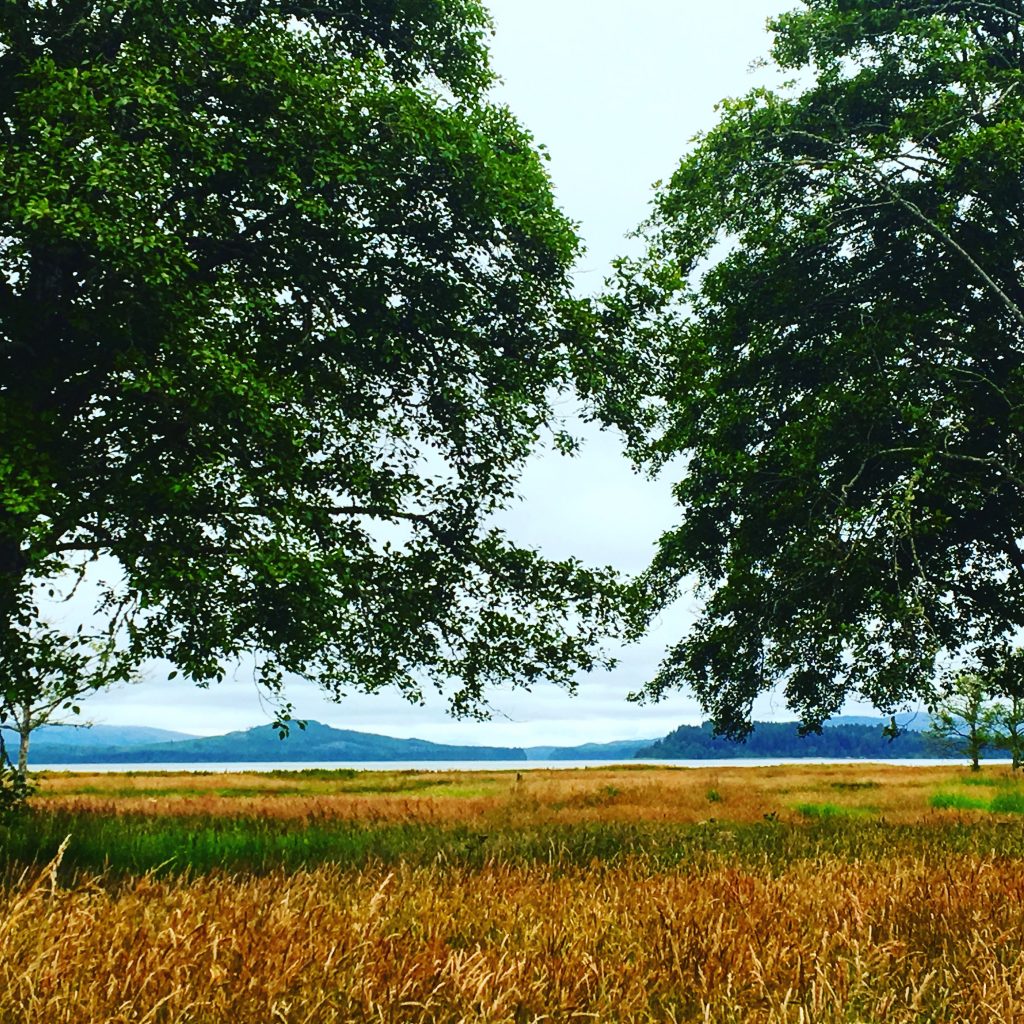
Willapa Bay
31. Friedlander/Thurston House – 1994
32. Eddie Freshley House – 1982
33. de Marcken/Freeman House – 2004
34. Hausler Cabin – 1989
35. Merton Andrews House – c. 1935
36. The Andrews Garage – c. 1900
37. Carl Andrews House – c. 1940
38. The Oysterville Store & Post Office – 1919
The Oysterville Post Office has operated in Oysterville since 1858 and is the oldest continuously run Post Office under the same name in Washington. It has been in its present location since 1919 when Bert and Minnie Andrews began the Oysterville Store.
39. Bert Andrews House – 1907
40. Oysterville Cemetery – 1858
Begun in 1858 on land donated by F.C. Davis, the old section of the cemetery contains the graves of many pioneer families. Near the entrance is the grave of Chief Nahcati who befriended R. H. Espy and showed him the oyster beds and for whom Nahcotta, a village three miles south of here, is named. Just to the south, near the marker which reads “And the sea gave up its dead…” are the graves of unknown sailors who washed ashore nearby in the early days of Oysterville. Thanks to Sydney Stevens for this text and to Patricia Fagerland for her illustration.
This walking tour has been provided courtesy of
Oysterville Restoration Foundation
Post Office Box 71 – Oysterville, Washington 98641
Copyright 2007 Oysterville Restoration Foundation
THE OYSTERVILLE RESTORATION FOUNDATION
Shortly after the village was designated a National Historic District, the community formed the Oysterville Restoration Foundation. Its purpose is “to maintain, repair and aid in the preservation and restoration of buildings and sites of national historic interest located in the Oysterville National Historic District, and to do all matters of business incidental thereto.” Thus far, maintenance and repair with restoration funds have been limited to the Oysterville Church and to the several parcels of open space, which come under the stewardship of the Foundation. Preservation and care of private property, including the historic homes and other buildings in the District, is: the responsibility of the individual property owners. Financial support for the Foundation is through grants and individual donations as well as proceeds from the rentals of the church and the offerings during summer vespers services. [more information]
THE DESIGN REVIEW BOARD
To safeguard the historic character of Oysterville, residents have developed a set of guidelines for new construction as well as for repairs or renovations to existing structures. The regulations apply to the National Historic District and to the county-created “buffer zone” which surrounds it. Basic guidelines call for design features such as gabled roofs, porches oriented to the street and use of historic, rather than synthetic, building materials. [more information]
THE OYSTERVILLE COMMUNITY CLUB
The Oysterville Community Club has been involved with local improvement projects since the early 1900s and has managed and maintained the historic Oysterville Schoolhouse since 1957. The building, which is equipped with a full kitchen, is used for community activities, and can be rented by the public for wedding receptions, family reunions, and other gatherings.
THE ESPY FOUNDATION
Author Willard R. Espy put Oysterville ‘back on the map’ in 1977 with the publication of Oysterville, Roads to Grandpa’s Village. Shor1ly before his death in 1999, a number of friends and followers established a foundation in his name with the purpose of ‘advancing and encouraging the literary and linguistic arts: The group manages a small library collection, sponsors writers’ retreats, and encourages literary pursuits in the local schools.

